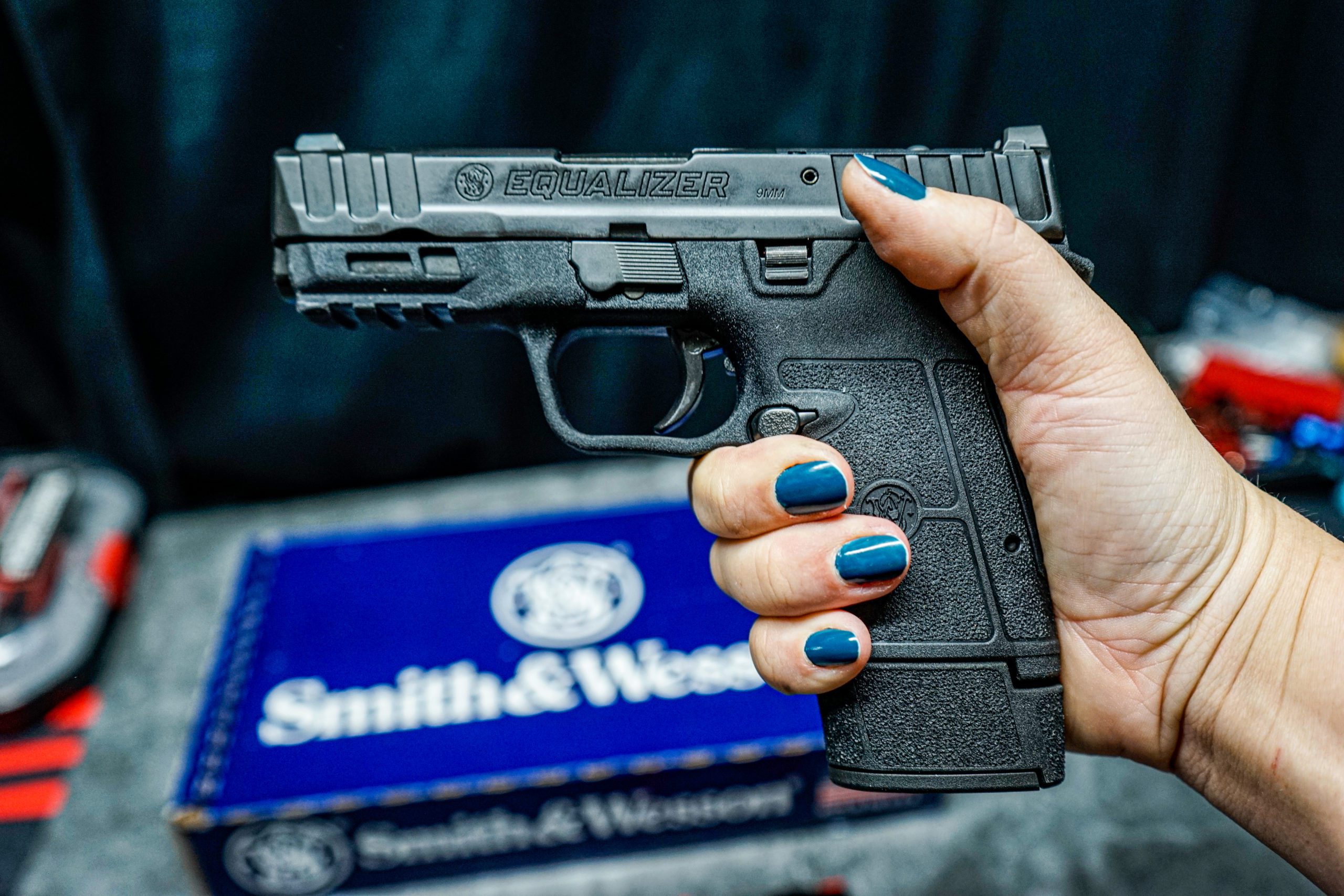Smith & Wesson has been busy lately introducing new pistols, including the latest release of the M&P Metal series gun and their new carry pistol, the Equalizer. They even started 2022 by introducing the CSX Micro-9 pistol at SHOT Show. The Equalizer is far from similar to the CSX design, so if you’re familiar with that gun, forget it and let us tell you about the Equalizer. We got our hands on one to review and were pleasantly surprised with the final delivery.
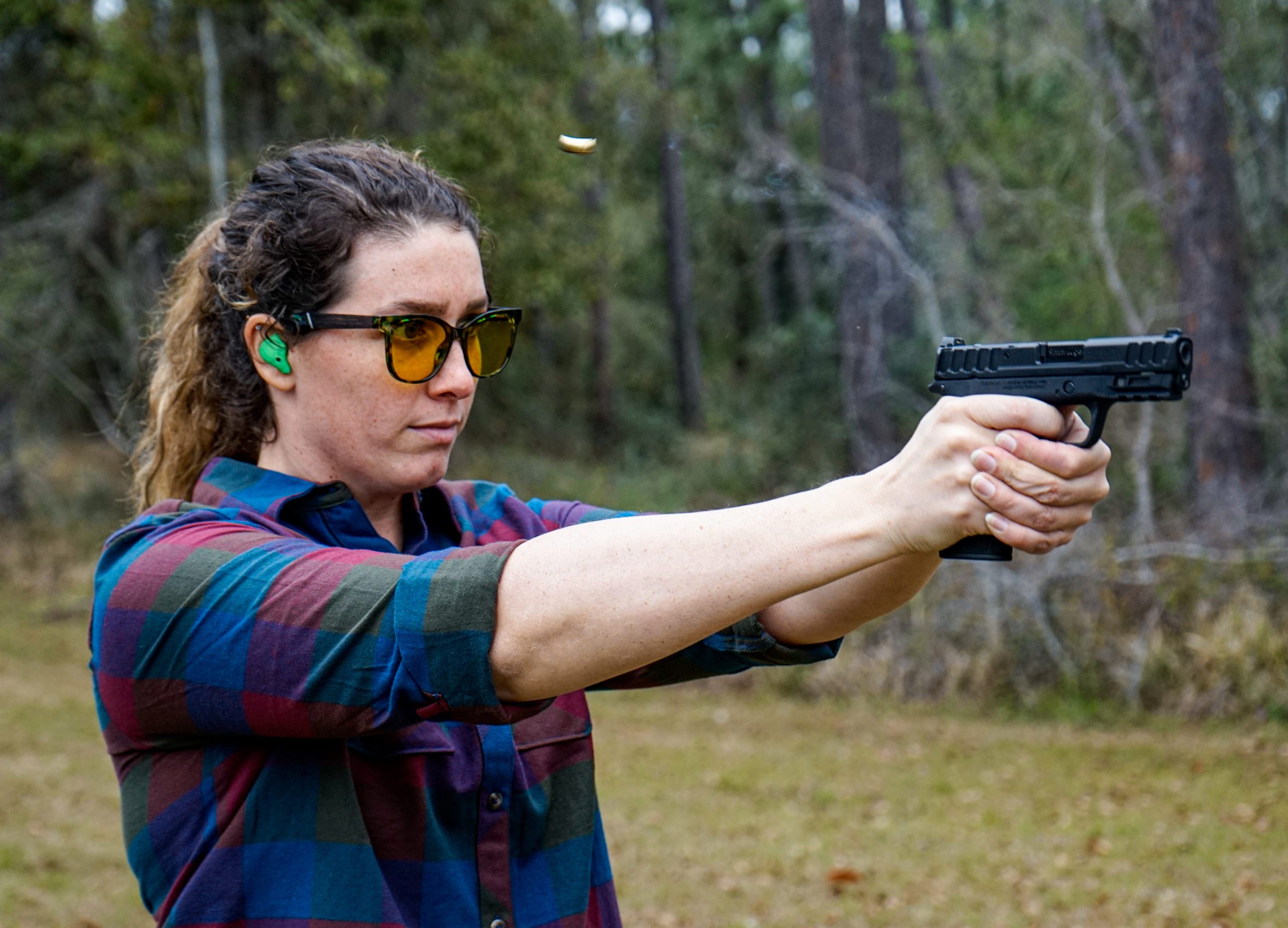
The Smith & Wesson Equalizer just might become my new EDC gun.
What’s in the Box?
The Smith & Wesson Equalizer comes in a branded cardboard box and includes a gun cable lock from Lockdown, an UpLULA® universal pistol magazine loader, and three different length magazines. The three magazines hold 10, 13, and 15 rounds.
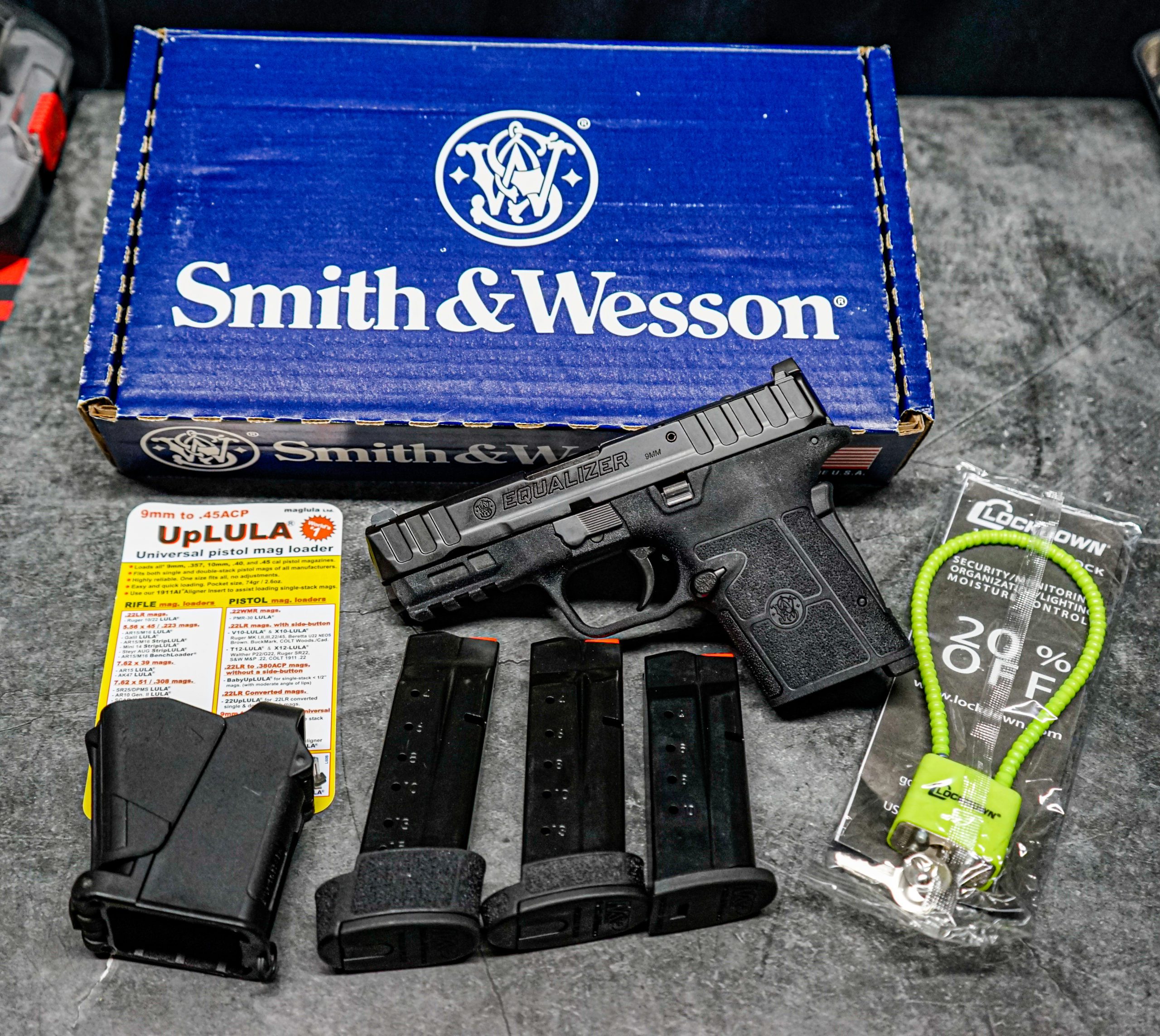
The Smith & Wesson Equalizer comes with 3 magazines, a gun lock, and a speed loader worth its weight in gold!
A Contender Amongst Concealed Carry Pistols
Smith & Wesson is a household name; chances are, you’ve owned one of their firearms in your lifetime. Not to add any bias to this article, but my very first carry gun was, in fact, the original M&P Shield model. The look and feel of the Smith & Wesson Equalizer pistol reminded me a lot of that gun and brought me back to my very first days as a new concealed carry permit holder. That being said, S&W has a long history with firearms manufacturing and has always provided great customer service, offered reasonable warranties, and made quality guns to which you can trust your life.
As with any new pistol in the firearms manufacturing world, finding aftermarket support can be challenging. Since the Equalizer is still in its infancy with aftermarket support, you might be limited on what’s available for your needs. For example, if you plan to add a light or laser to your gun, it’s a good idea to see what holsters are being made to fit the Equalizer with popular lights or lasers.
Pictured below is the Xecutive Holster by N8 Tactical from Crossbreed Holsters in one of their fun new prints. They are one of the few companies manufacturing the Equalizer holsters. The retention is adjustable; you can swap the single clip for two J Clips, UltiClips, or whatever you prefer. You can add a wedge or a modwing claw and set it up for how you like to carry it.
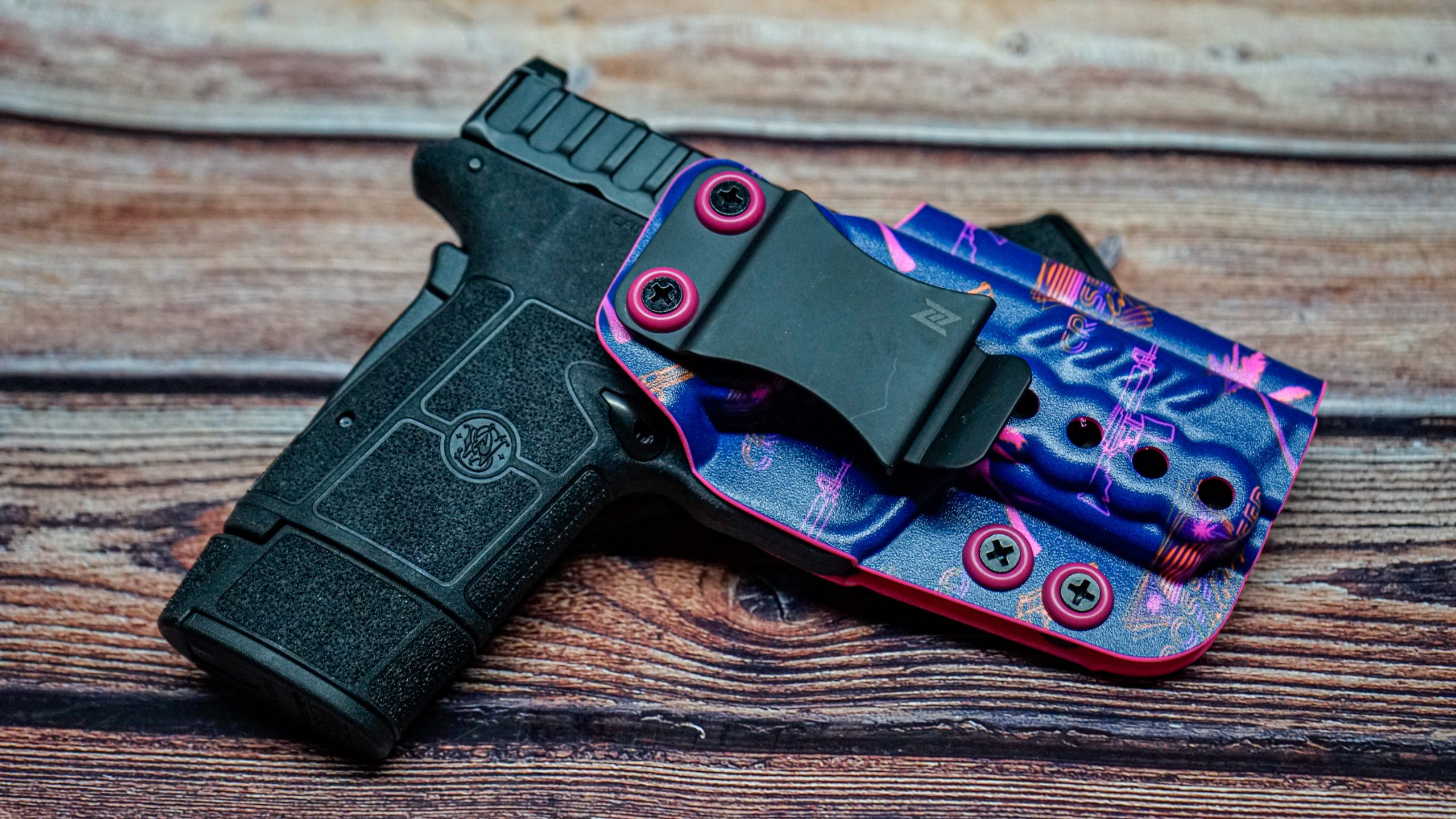
The Smith and Wesson Equalizer is a comfortable gun to carry IWB with a Xecutive Holster by N8 Tactical from Crossbreed Holsters.
A real benefit to this gun is having different magazine options to give you more capacity or allow you to have deeper concealment. The 10-round capacity puts the Smith & Wesson Equalizer in contention with guns like the Glock 43x or 48, Ruger Max-9, and Sig Sauer’s P365. However, the 13 and 15-round magazines upgrade the Equalizer to compete with carry guns such as the Wilson Combat SFX9, Sig Sauer P365XL, Glock 19, CZ P-10 Compact, and Walther PDP Compact, to name a few.
I prefer to carry a backup magazine whether the gun has a low capacity or high capacity. I tend to operate on the mantra, “Two is one, and one is none.” The flush-fit 10-round magazine makes Appendix carry comfortable and makes the gun easier to conceal than the 15-round magazine. The 15-round magazine, however, makes a perfect backup magazine. It is easy to conceal on its own, and with the added length to the magazine, it is much easier to grab to reload than the 10-round magazine. I think it’s a great offering to have three magazines because, for most concealed carry pistols, I have to purchase aftermarket magazine extensions or base pads with a pinky extension to give me a better grip on the gun. With these three options, you can please just about everyone (and be state compliant for those with 10-round limitations).
Key Things to Know About This Gun
Hammer Fired
If you own a polymer-framed pistol, chances are it’s a striker-fired pistol. Some examples include Glock, Canik, H&K, and your major pistol manufacturers. While Smith & Wesson’s full-size M&P, for example, is a striker-fired gun, the Equalizer is not. The Equalizer pistol is a hammer-fired pistol, which means it has an internal hammer that fires the cartridge in the chamber. Pulling the trigger on the Equalizer releases the hammer, which strikes the firing pin, and ignites the primer to start the firing process. On a striker-fired pistol, pulling the trigger releases the firing pin itself.
So what does striker-fired or hammer-fired actually affect in terms of shooting a handgun? One isn’t necessarily better than the other; they both have different benefits. Hammer-fired pistols like the Equalizer, with a single action trigger, usually have a shorter trigger stroke and lighter trigger pull. Striker-fired pistols will usually have built-in trigger safeties with a heavier trigger pull. Hammer-fired pistols are usually outfitted with an external grip and/or thumb safety. Striker-fired pistols typically do not have any external manual safety you have to worry about. And finally, hammer-fired handguns usually have an easier-to-manipulate slide and are definitely the biggest difference between them and their striker-fired counterparts.
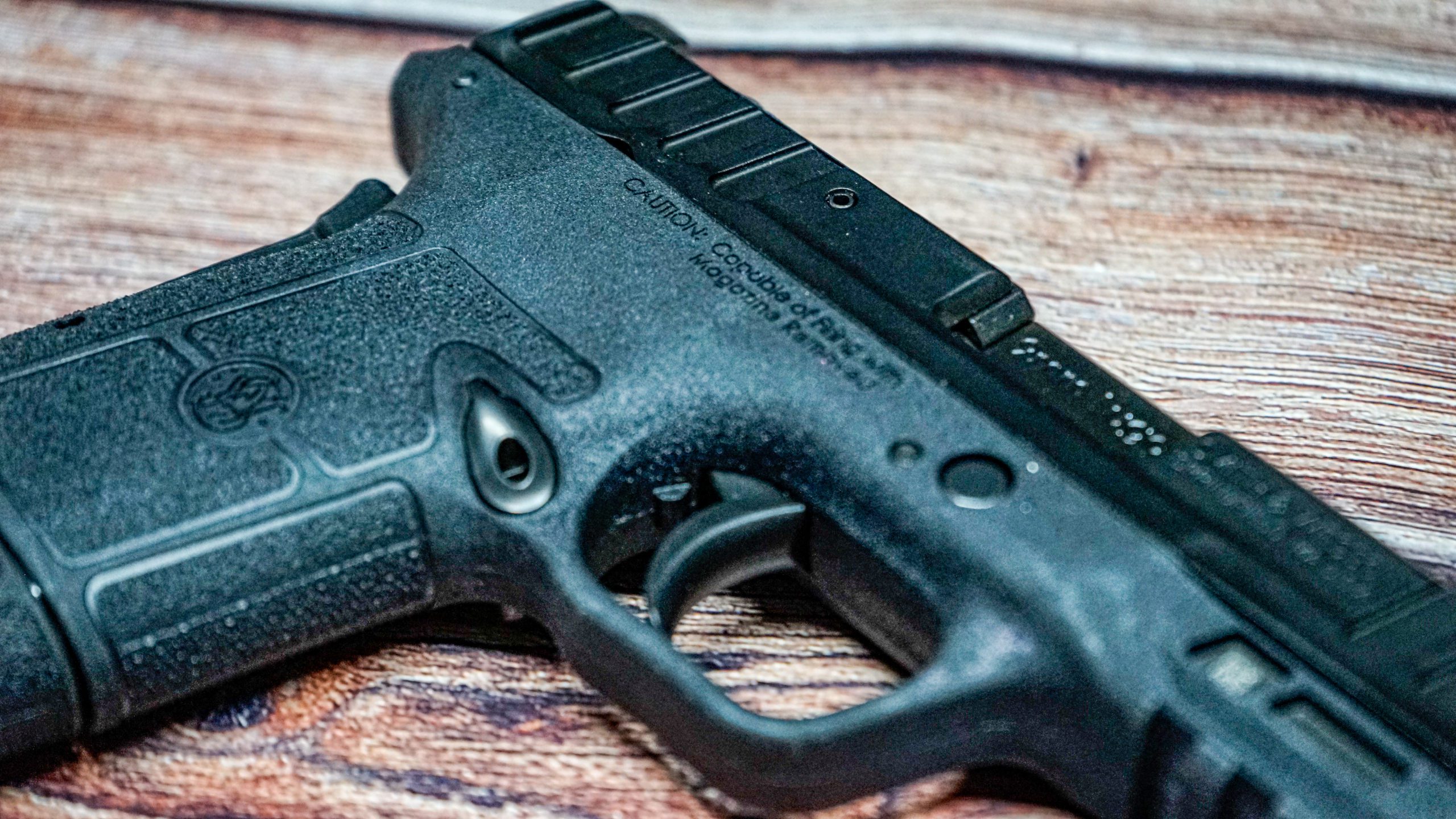
The Equalizer is a hammer-fired pistol with a single-action trigger that feels natural to shoot and easily resets for follow-up shots.
Going back to the Smith & Wesson Equalizer pistol, it has a single-action trigger that is quite pleasant to shoot. The take-up on the trigger isn’t much, and the breaking point is a smooth, continuous pull with an average reset for follow-up shots.
Grip Safety
Since the Equalizer is hammer-fired, it is made with a built-in grip safety that must be depressed for the gun to fire. It is also available with an additional external thumb safety or in the “no thumb safety” model. The Equalizer shouldn’t cause any confusion for people who train often with their concealed carry pistols and are used to grip or thumb safeties. If you have never owned or carried a gun with an external safety of any kind, there is a learning curve to train your brain to depress or switch off the safety every time you fire the gun. If you’re familiar with 1911 pistols specifically, you know you will have a thumb safety that has to be pressed downward for the gun to fire and usually a grip safety. Without both of these mechanisms depressed in their off position simultaneously, the gun will not fire.
The Equalizer’s back strap grip safety is perfectly aligned in the center of the backstrap to make it easy to depress the safety when you go to grip the pistol. If you have a perfect grip every time you draw the gun, you should never have an issue with it not firing when you want it to. On the flip side, if you struggle to get a proper, high grip with your dominant hand, where the grip safety isn’t depressed all the way down, you could “safety yourself.” Essentially, a poor grip that doesn’t push the grip safety in will prevent the gun from firing until you correct your grip. This is the last thing you want to happen in a gunfight.
To really become proficient with and know your firearm inside and out, you need to dry fire and live fire regularly. Shooting 50-100 rounds a year isn’t enough. Practicing drawing from a holster three or four times and deciding to carry a gun isn’t enough. I recommend taking a firearms course beyond the basics or beyond a concealed carry permit class, for example. Sign up to take a class with a professional shooter or instructor who can back up what he or she is saying with their shooting skills. Sign up for a defensive tactics course or a shooting from a vehicle course. The pressure to perform in classes will expose your weaknesses. I’m a firearms instructor myself and have seen almost every student I’ve ever had “safety themselves” with their own pistols because, under pressure, they forgot to switch the thumb safety off or didn’t have a proper grip to depress the backstrap safety. If you really want to test your shooting abilities and become proficient in drawing from a holster and shooting your gun, sign up to shoot a USPSA or IDPA match. The pressure of the timer and competing will also expose your weaknesses, but as you keep attending matches, drawing from concealment will become second nature to you, and you will know your gun inside and out.
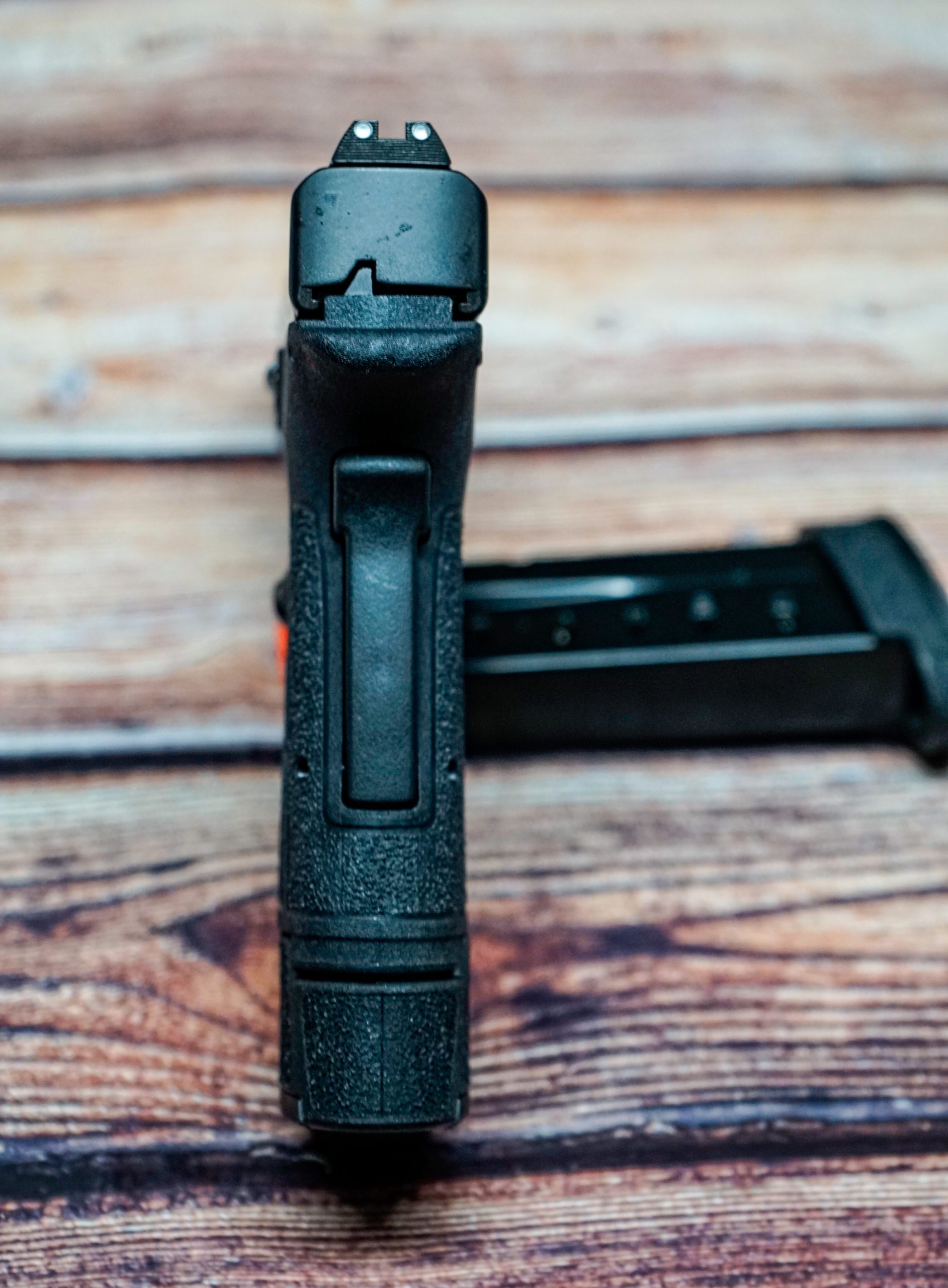
The Equalizer features an external grip safety.
The Smith & Wesson Equalizer is outfitted with a 3.675-inch barrel, which is longer than the Glock 43, Sig P365X, and Springfield Hellcat, to name a few comparable micro-compact pistols. Because of the longer barrel, there is a longer sight radius on the Equalizer compared to these guns, giving you a little more accuracy when aiming. Combined with the single-action trigger, the Equalizer truly is a fun compact pistol to shoot and accurate to shoot. Accuracy is also dependent upon what ammunition you feed the gun. This gun easily group shots together with good-quality ammunition with a small standard deviation in velocity between rounds. These groups were shot from about 12 yards.
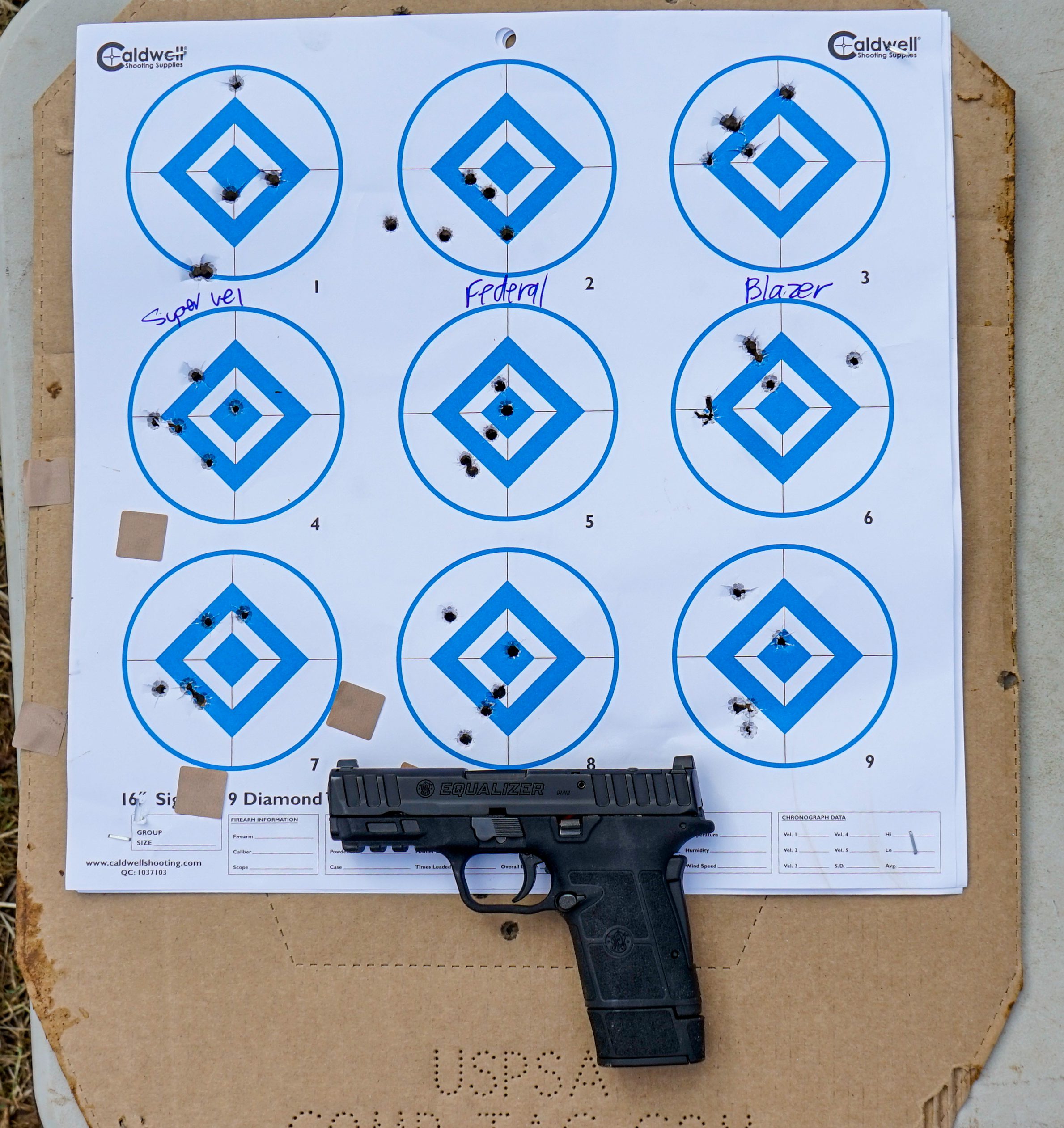
I test-fired the Equalizer using all 115-grain 9mm bullets from Super Vel Ammunition, Blazer, and Federal Syntech.
Reliability
As with any new gun, before ever carrying it or shooting it in a competition, it is a good idea to test-fire it with multiple types of ammunition to see what it prefers to run. This is especially true of defensive ammunition. With hundreds of types of hollow point bullets on the market today, it can sometimes be difficult to find a reliable bullet that feeds every time through your gun. Issues to feed can be caused by the bullet’s profile not going up the barrel’s feed ramp if it has sharp edges, or it can be because of the length of the ammunition, or it could even be caused by a magazine spring tension issue.
It is a good idea to test ammunition loaded with 90-grain 9mm bullets to 115gr, 147gr, and even heavier bullets. With defensive ammunition, it’s also important to pay attention to the label to see if there is a +P or +P+ on the box. These cartridges are labeled because they are loaded to generate more pressure than standard ammunition. Plus-P-Plus (+P+) is not to be used in Smith & Wesson firearms at all. The use of Plus-P (+P) may affect the wear on parts, but it can be used in the Equalizer pistol.
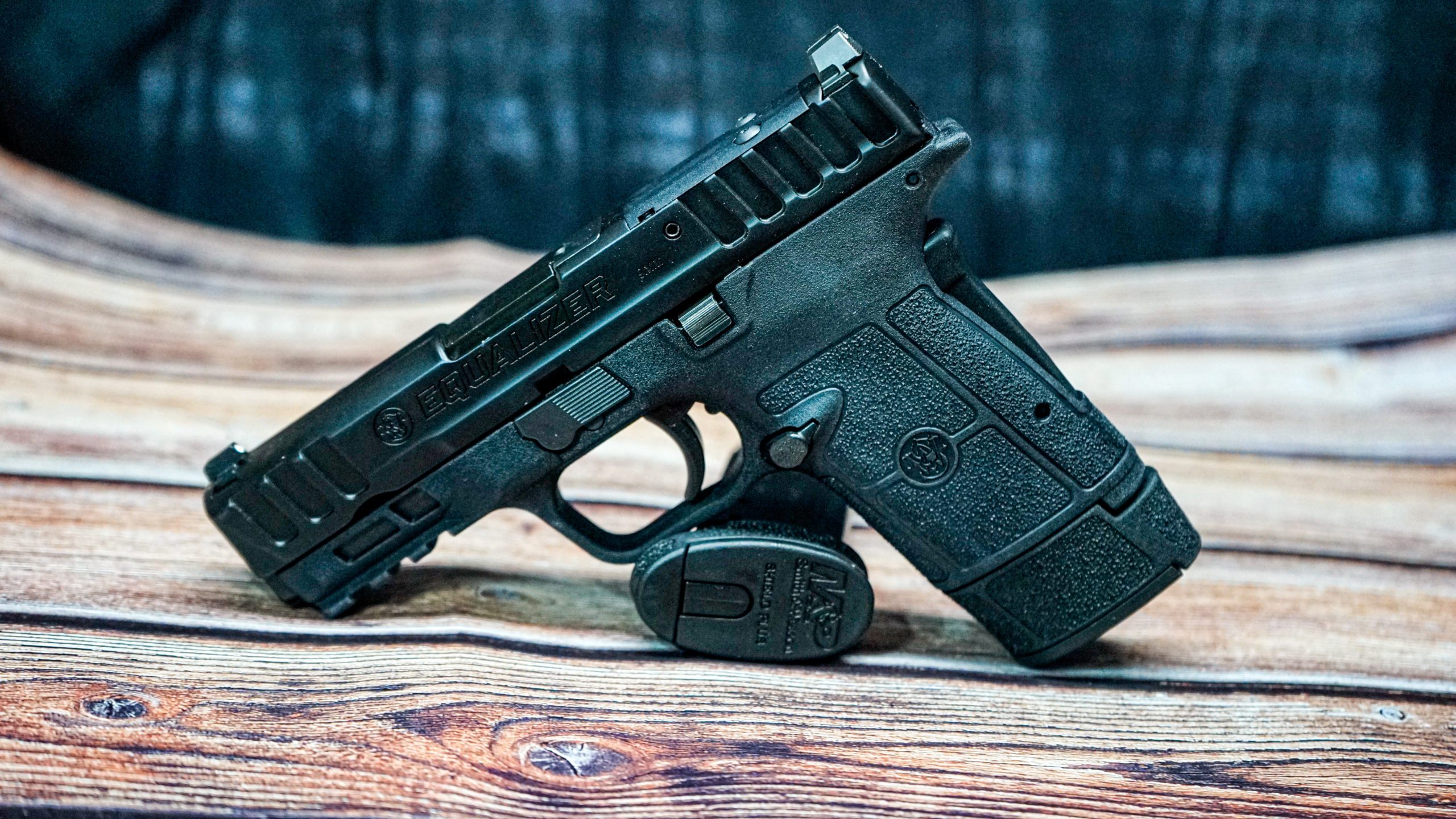
The reliability and accuracy of the Equalizer when you feed it good quality ammunition is what really sets this pistol apart from other micro-compact pistols available on the market today.
I test-fired the Equalizer with coated and jacketed round nose bullets and with a variation of 115, 124, and 147 grain 9mm bullets. The bullet weight and coating caused no issues, but the cartridge’s overall length did. When I shot reloaded ammunition loaded long (1.157in), I had some issues with cartridges stove-piping instead of ejecting. The gun fed flawlessly when I switched to shorter overall ammunition (1.133in).
Slide
The most beneficial feature of this gun is the easy-to-rack slide. As an instructor, the Smith & Wesson Shield EZ is one of the best guns for women and kids to use since the slide is so easy to rack. The drawback to the EZ pistol is the two external safeties that people forget to depress or switch off to fire the gun. While the Equalizer is not as light as the EZ slide is, it beats the Glock 43, Sig P365 (all versions), Hellcat, and I’m sure many other micro-compact pistols, especially striker-fired. The easy-to-rack slide is a great bonus but comes at the cost of ensuring you always get a proper grip on the gun to ensure the safety is off, so the gun will fire when you need it to most.
Iron Sights + Optics Ready
The Equalizer doesn’t come with any fancy iron sights. The front sight is a plain white dot, and the rear is a white 2-dot. This 3 dot system does make it easy to align your sights on target, but if you are using this gun for self-defense, I recommend upgrading the sights to night sights to glow in the dark or mounting a red dot.
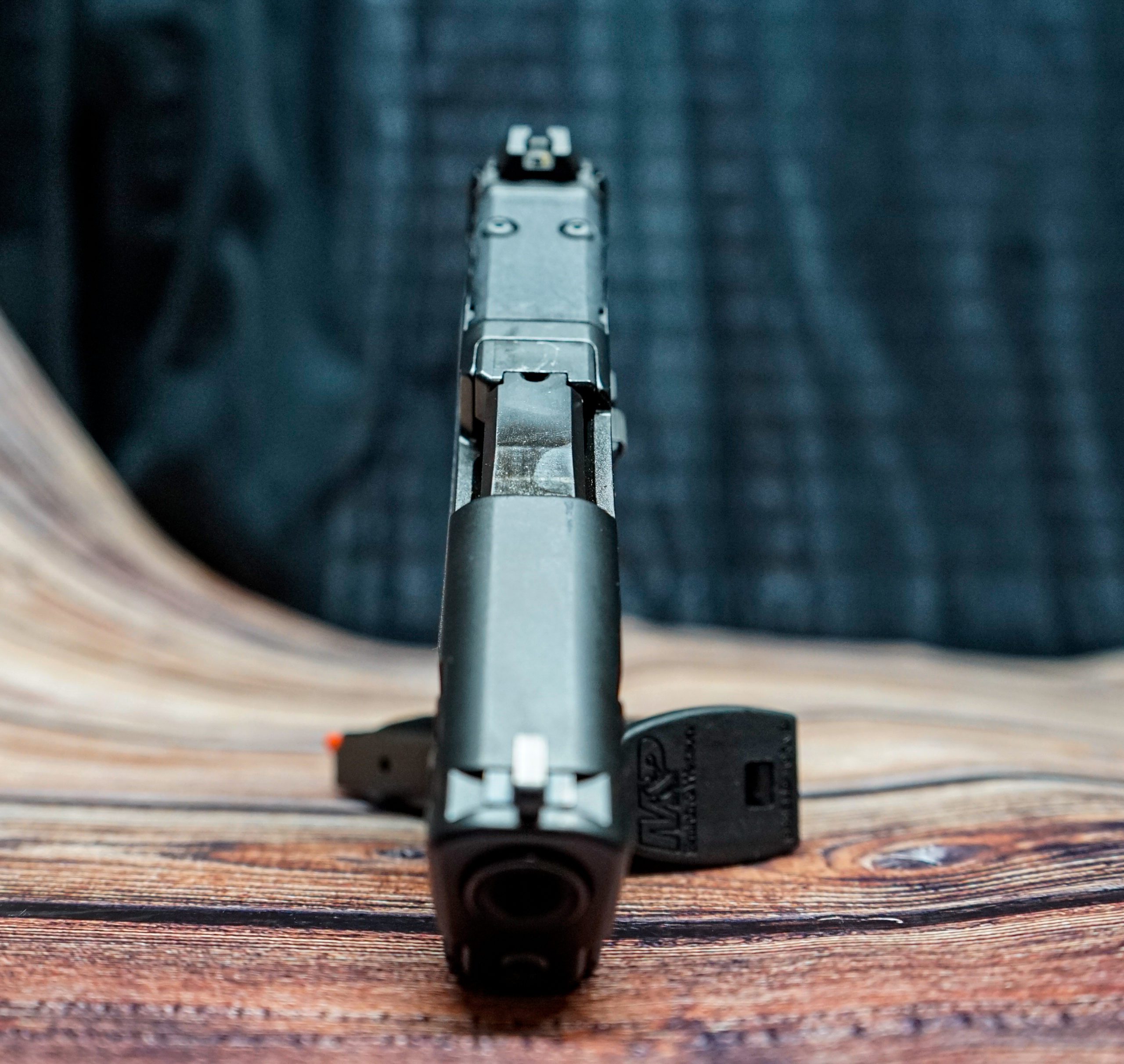
The placeholder plate on the slide is easily removed, so you can direct mount a red dot to the slide.
The Smith & Wesson Equalizer is optics-ready for some red dots, but not all. It is not clear on Smith & Wesson’s website what red dots it is compatible with, so this is the only negative to not knowing if it’ll work with your favorite red dot. I had an Eotech EFLX mini reflex red dot sight on hand, and it was too long to fit the slide cut area, so I couldn’t mount a red dot to the gun yet.
The gun allows for red dots to mount directly to the slide itself rather than using an adapter plate. There are two screws holding the placeholder plate to the slide. Unscrew those, remove the plate, and use the provided screws that come with your red dot to install it on the gun.
Low Felt Recoil
I am a firearms instructor and teach many concealed carry permit classes. The biggest issue I see people struggle with is managing the recoil of their chosen compact pistol. It’s great to have a concealed carry pistol that doesn’t print and is easy to conceal, but if you can’t hang on to the gun in recoil and don’t enjoy shooting it, that gun isn’t a good fit for you. No matter what, short-barrel pistols with polymer grips will have some felt recoil that requires a proper grip on the gun to manage shooting it. The Smith & Wesson Equalizer gave me enough grip on the gun, even with the 10-round magazine flush with the mag well, to easily manage the felt recoil. I preferred the 13 and 15-round magazines for the best grip possible, but I was genuinely surprised at how comfortable this pistol was to shoot.
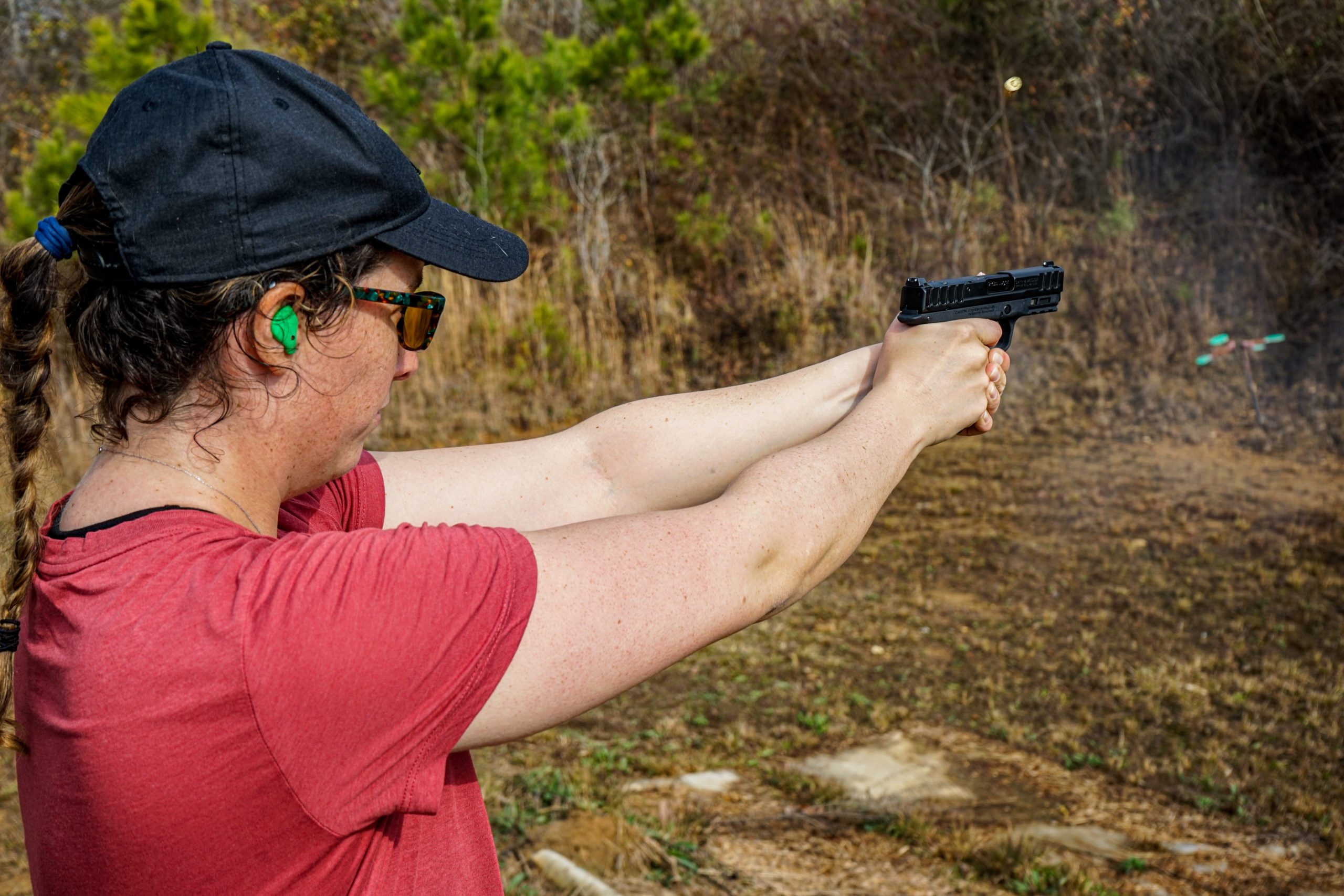
The Smith & Wesson Equalizer had very little felt recoil compared to most compact pistols commonly used for concealed carry.
Smith & Wesson Equalizer Specifications
- Caliber: 9mm Luger
- Capacity: 10+1, 13+1, 15+1
- Length: 6.75
- Front Sight: White Dot
- Rear Sight: White 2-Dot
- Action: Internal Hammer Fired
- Grip: Polymer
- Barrel Material: Stainless Steel with Armornite® Finish
- Slide Material: Stainless Steel with Armornite® Finish
- Frame Finish: Matte Black
- Barrel Length: 3.675″ (9.3 cm)
- Weight: 22.9 oz.
MSRP: $599.00
Final Thoughts of the Smith & Wesson Equalizer
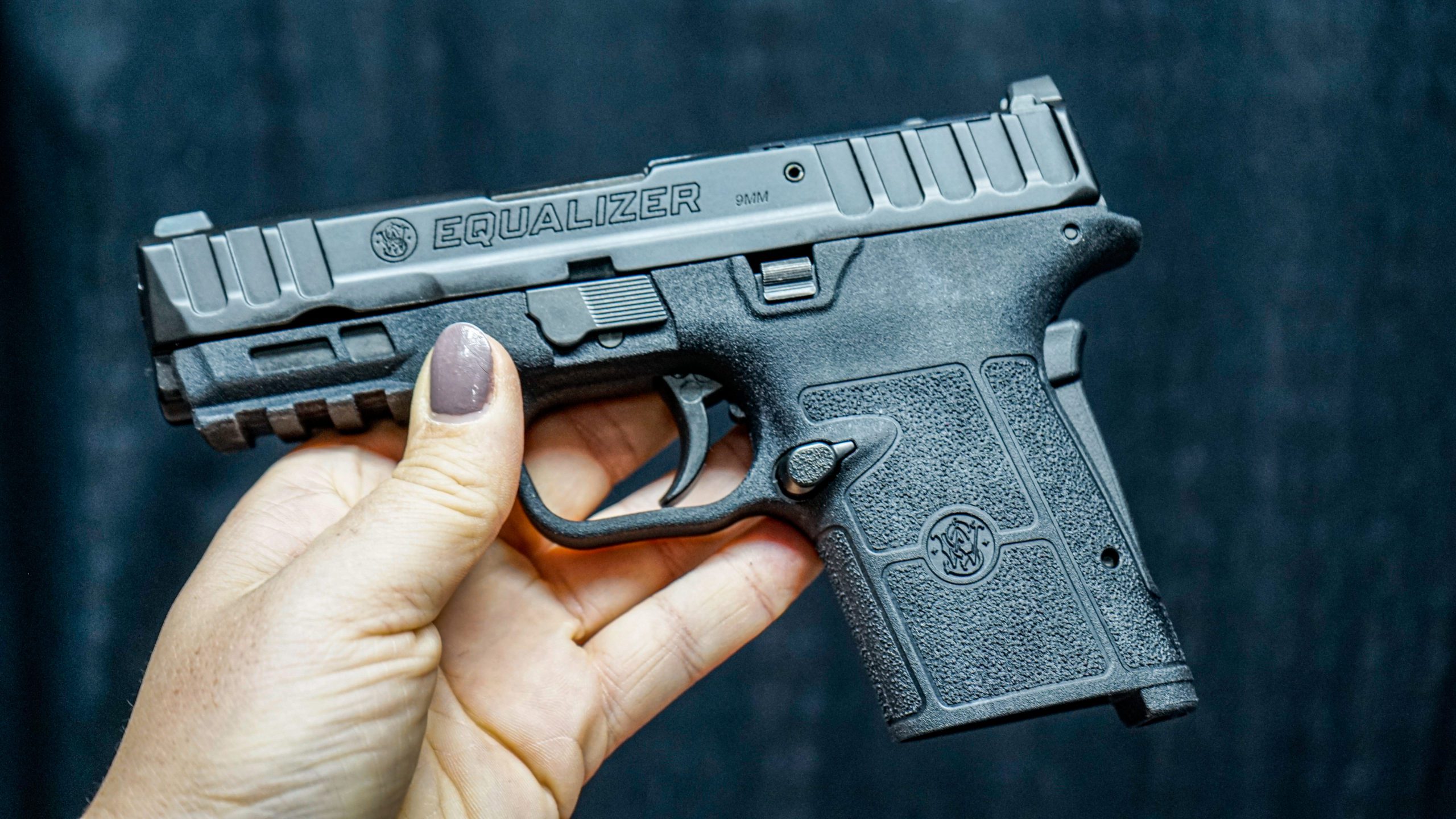
As long as you practice getting a great grip every time when drawing from concealment, this is a reliable carry gun to have on you.
I have always been a fan of Smith & Wesson for making quality guns at a reasonable price, designed for a specific purpose. I trust the brand and would trust the gun to cycle if I ever needed it in a defensive situation. I don’t take choosing a carry gun lightly, as it is one of the most important decisions you can make.
This gun has won me over and is one I plan to add to my concealed carry pistol mix. I look forward to training with it more and finding a compatible red dot optic. For the value, price, and quality, the Smith & Wesson Equalizer is definitely a solid choice for a concealed carry pistol.

For more information on Smith & Wesson’s products, visit smith-wesson.com.


